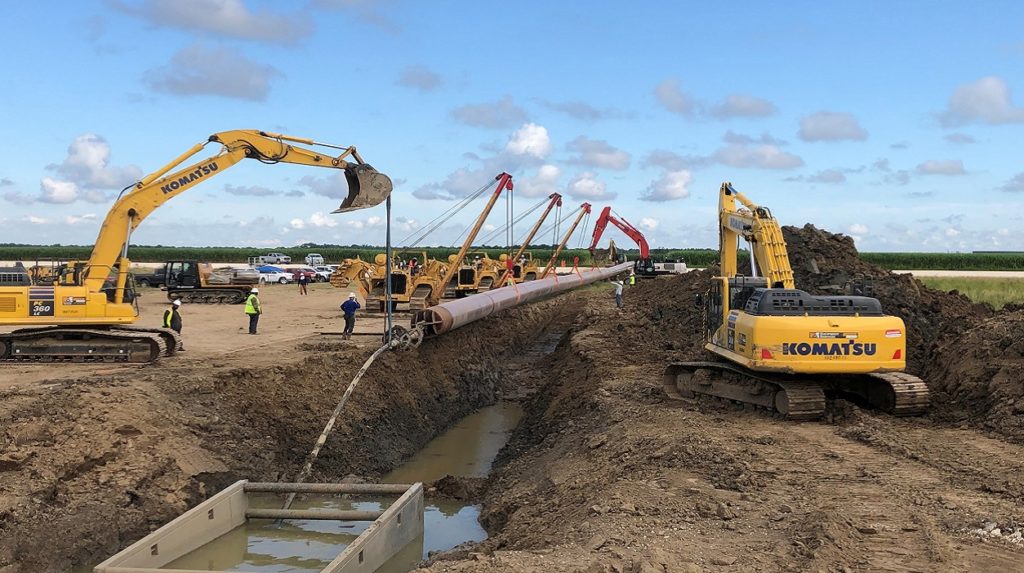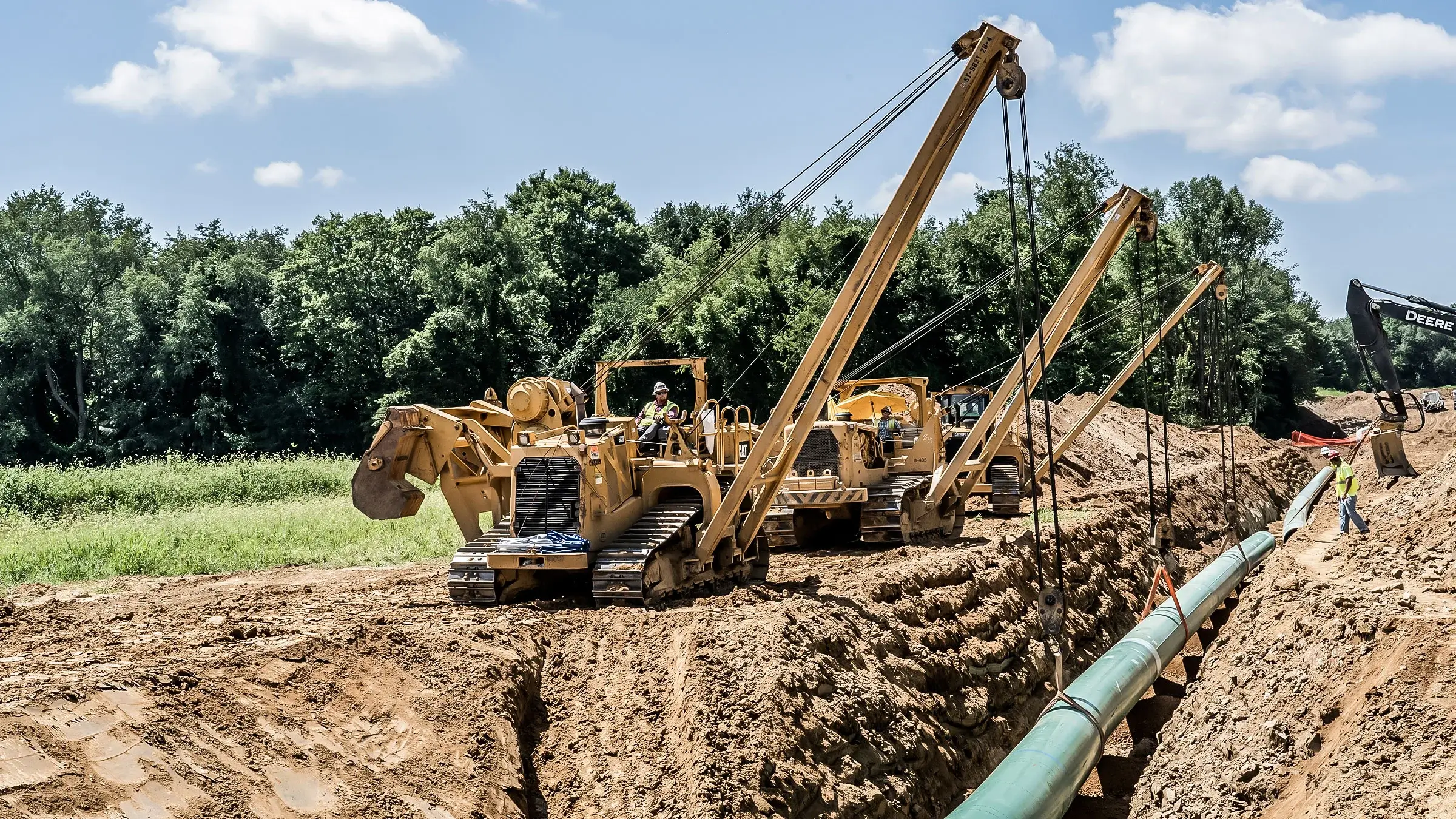Everything You Need to Know About Creek Pipe pipeline construction
The Relevance of Pipeline Construction: Checking Out the Services Offered in the Market
Pipeline construction is an important element of contemporary framework. It promotes the transportation of crucial sources like oil, gas, and water. The sector includes different solutions, including preparation, website preparation, and installation. Each stage requires precision and adherence to safety standards. As communities depend upon these systems for their resources, understanding the complexities of pipe construction exposes its value and prospective challenges. What aspects affect the success of these projects?
Summary of Pipeline Construction Providers
Pipeline construction solutions incorporate a range of customized tasks created to assist in the installation of pipes for transferring various materials, including oil, gas, and water. These services typically include site prep work, excavation, installment of pipeline sectors, and backfilling. Skilled labor and innovative tools are basic for guaranteeing each stage is performed with precision and safety.Safety protocols are paramount, as these jobs commonly involve working with harmful products and in challenging atmospheres. Quality control steps establish that the pipes satisfy industry criteria and guidelines. Additionally, the services may include trenchless innovation, which reduces surface area disruption.Environmental considerations play a significant function in pipeline construction, requiring analyses and mitigations to secure bordering environments. Generally, pipe construction services are vital for establishing the infrastructure required for energy and water circulation, supporting both economic growth and societal requirements.
Preparation and Layout in Pipeline Projects
Effective preparation and layout are crucial components of effective pipeline jobs, making sure that all aspects are meticulously resolved prior to construction starts. This stage entails complete expediency research studies that evaluate the technical, economic, and environmental elements influencing the project. Designers and developers collaborate to produce thorough plans that lay out the pipeline course, materials, and construction methods, lining up with regulatory requirements and industry standards.Advanced software and modeling techniques are usually utilized to mimic various circumstances, optimizing the design for efficiency and security. Ecological effect evaluations are carried out to alleviate potential damage to communities and areas, reflecting a dedication to lasting practices. Additionally, stakeholder involvement is necessary, cultivating interaction and dealing with concerns from impacted celebrations. Ultimately, effective planning and style set the structure for a pipeline task, reducing risks and ensuring a streamlined construction procedure, eventually adding to the total success of the procedure.
Website Prep Work and Excavation
Detailed site prep work and excavation are important action in the pipeline construction procedure. This stage entails a comprehensive evaluation of the land where the pipeline will be installed. Job groups conduct studies to determine soil kinds, topography, and existing energy lines to assure a safe and effective excavation. Correct website prep work reduces ecological impact and assists in smoother construction operations.Excavation adheres to, where hefty machinery is employed to get rid of soil and rock, producing a trench that satisfies the defined deepness and width for the pipe. This procedure must comply with safety and security laws and environmental guidelines to stop damages to surrounding ecosystems.Additionally, disintegration control procedures are implemented to stabilize the website throughout and after excavation. Efficient website prep work and excavation add greatly to the general success of pipe projects, laying a solid structure for the subsequent phases of construction.
Pipeline Installation Strategies
Pipeline installation techniques are important for the successful application of infrastructure tasks. 2 popular approaches consist of trenchless innovation, which lessens surface disturbance, and the open-cut excavation procedure, known for its straightforward approach. Each method provides distinct advantages and considerations depending upon task demands and ecological elements.
Trenchless Technology Approaches
While conventional techniques of pipe setup often involve comprehensive excavation, trenchless innovation techniques offer a more reliable and eco-friendly option. These innovative methods, such as horizontal directional boring and pipeline bursting, lessen surface area disruption by enabling the installment of pipes without extensive excavating. This not only decreases the ecological influence yet additionally greatly minimizes labor and repair prices. Trenchless methods assist in the installment of pipelines in city locations where traditional excavation would certainly be not practical or destructive to existing framework. Furthermore, these strategies can suit different dirt types and conditions, making them functional options for pipeline construction. Inevitably, trenchless technology represents a substantial advancement in the pipe industry, advertising sustainability and functional effectiveness.

Open-Cut Excavation Refine
Open-cut excavation remains a basic method in pipe installation, characterized by the straight excavation of a trench to lay pipes. This technique entails removing soil and other materials to create a trench of sufficient depth and width, enabling the placement of pipelines at the required grade. Open-cut excavation is commonly liked for its cost-effectiveness and simplicity, especially in areas with stable dirt conditions. It can interrupt surface tasks and needs cautious preparation to take care of web traffic and ecological impacts. Safety and security actions should be implemented to shield workers and nearby infrastructure during the excavation process. Overall, while open-cut excavation might not be ideal for all terrains, it remains an extensively used method in pipeline construction.
Checking and Quality Control
Evaluating and high quality assurance are vital elements in pipe read here construction, guaranteeing that installments fulfill established security criteria and efficiency requirements. Different evaluation strategies and approaches are employed to assess worldly quality and adherence to governing conformity. This organized technique helps recognize possible concerns prior to they escalate, guarding the stability of the pipe system.

Inspection Techniques and Approaches
Inspection techniques and methods are crucial elements in guaranteeing the honesty and safety of pipe construction. Numerous methods, including visual assessments, ultrasonic testing, and radiographic evaluations, are utilized to spot flaws and confirm high quality. Aesthetic assessments allow for the identification of surface area abnormalities, while ultrasonic testing makes use of acoustic waves to examine wall surface thickness and find defects internally. Radiographic evaluations involve X-rays or gamma rays to create pictures of the pipeline's framework, exposing surprise concerns. In addition, pressure testing is carried out to assess the pipeline's integrity under functional conditions. These techniques collectively add to an extensive understanding of the pipe's condition, making it possible for prompt maintenance decisions and ensuring conformity with market standards. Effective evaluation is critical for avoiding failings and advertising long-term operational security.
Security Standards Conformity
Making certain compliance with safety and security standards is extremely important in pipe construction, as it straight influences the project's general top quality and reliability. Sticking to established policies and standards assurances that construction practices minimize dangers associated with pipe installation and operation. Creek Pipe trenching services. Rigorous screening protocols, including non-destructive screening and pressure analyses, are essential in verifying that pipelines useful link can stand up to the functional stresses they will certainly run into. Quality control procedures are likewise essential, as they establish a framework for regular monitoring and assessment throughout the construction process. By prioritizing safety requirements conformity, companies not just protect employees and the atmosphere however likewise boost the honesty of the pipeline, eventually resulting in long-lasting operational success and public depend on in the infrastructure
Product Top Quality Analysis
Product quality examination plays a significant duty in the total honesty of pipe construction. This process includes extensive screening and top quality guarantee steps to guarantee that products fulfill industry standards and requirements. Numerous examinations, consisting of tensile toughness, corrosion resistance, and weld stability analyses, are conducted to determine any prospective weaknesses. A detailed analysis not just ensures the performance of the pipe yet additionally improves safety and security and longevity over its lifespan. In addition, implementing quality assurance methods helps reduce threats linked with material failings, which can lead to pricey repair services and ecological threats. By prioritizing material high quality assessment, firms can guarantee compliance with governing requirements while cultivating confidence amongst stakeholders in the reliability of their pipe systems.
Repair And Maintenance Solutions
Repair and maintenance services play a necessary duty in the durability and efficiency of pipeline systems. These solutions include normal evaluations, repairing, and rehabilitative activities to deal with damage, leaks, and various other issues that may emerge over time. Competent service technicians make use of innovative technologies such as ultrasonic testing and wise pigging to monitor pipeline stability, guaranteeing that any possible Related Site problems are recognized early.Additionally, upkeep programs often include arranged precautionary procedures developed to enhance system reliability and minimize the chance of unforeseen failings. Repair services may involve the replacement of broken sections, securing leakages, or utilizing trenchless innovation for very little interruption.
Environmental Conformity and Precaution
Pipeline systems not only require continuous repair and maintenance to function effectively but also have to follow strict environmental conformity and precaution. These regulations are essential for reducing eco-friendly influence and making certain public safety. Companies in the pipe construction sector execute detailed ecological evaluations prior to task initiation, determining potential risks to wildlife and ecosystems.Furthermore, adherence to safety and security procedures safeguards employees and bordering communities. This includes routine training on emergency situation reaction and spill avoidance techniques.To keep compliance, sectors utilize checking innovations to find leaks and various other anomalies in real-time. Environmental monitoring plans are often developed to outline steps for addressing unforeseen issues during construction.Ultimately, strict adherence to environmental compliance and precaution not just fulfills legal commitments yet additionally cultivates sustainable practices within the market, promoting a balance in between facilities growth and environmental stewardship.
Frequently Asked Questions
What Career Opportunities Are Offered in Pipeline Construction?
Occupation chances in pipe construction include duties such as task managers, designers, welders, and safety inspectors. These settings need diverse abilities, offering paths for growth in a crucial market of facilities growth and power distribution.

How Do Pipeline Projects Effect Citizen Communities?
Pipeline jobs substantially affect local areas by affecting economic development, providing work opportunities, and improving infrastructure. However, they might likewise elevate concerns regarding environmental impacts, land usage, and potential disturbances to community communication and all-natural environments.
What Innovation Is Made Use Of in Modern Pipeline Construction?
Modern pipe construction uses sophisticated technologies such as GIS for mapping, drones for aerial surveys, and automated welding systems to improve performance, safety, and precision, ultimately facilitating the effective transportation of sources throughout numerous surfaces. Creek Pipe Company.
Exactly How Are Pipeline Construction Expenses Approximated?
Pipeline construction prices are approximated with thorough analyses of products, labor, devices, and regulatory requirements. Elements like terrain, job size, and environmental considerations additionally substantially influence the general spending plan and monetary preparation for construction.
What Are the Greatest Difficulties in Pipeline Construction Projects?
The greatest obstacles in pipe construction tasks include governing compliance, ecological worries, logistical concerns, securing funding, and handling labor lacks. Each variable can substantially influence timelines and budgets, complicating the general execution of the job.